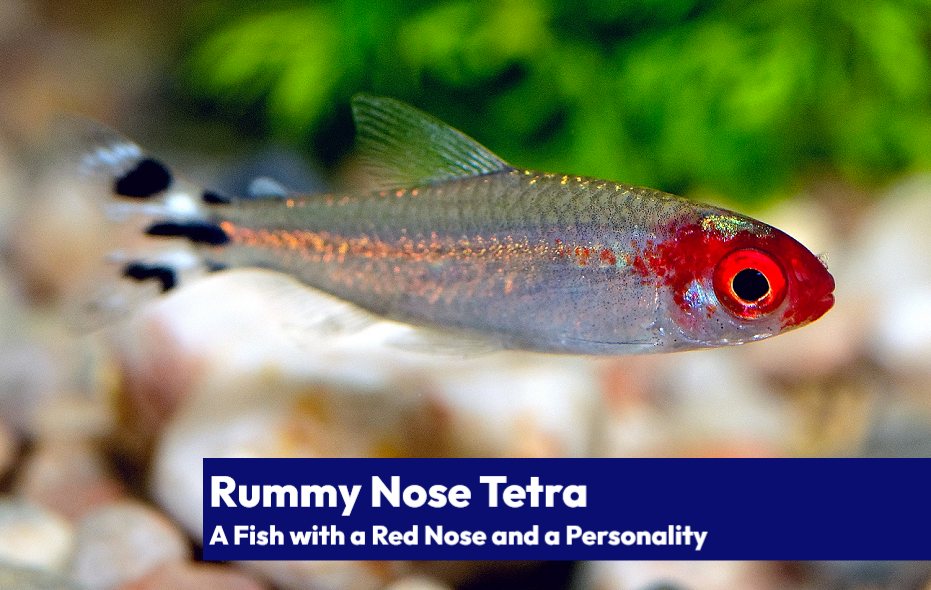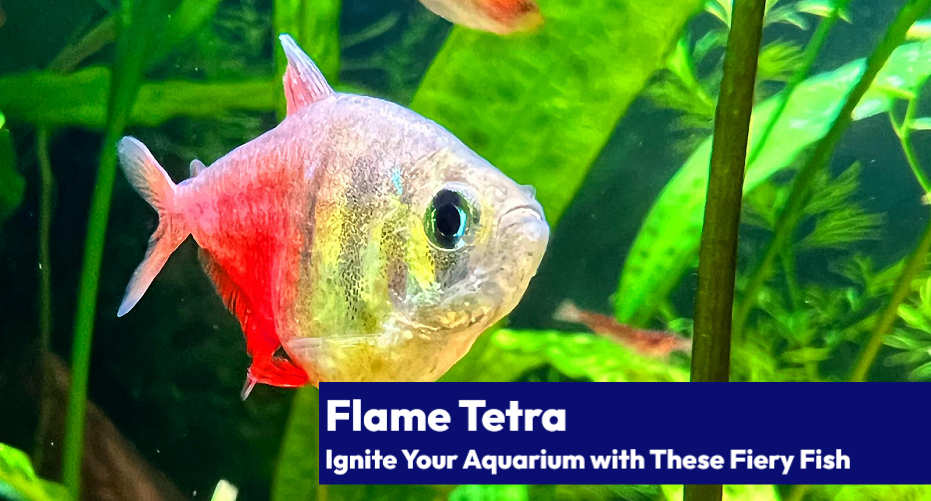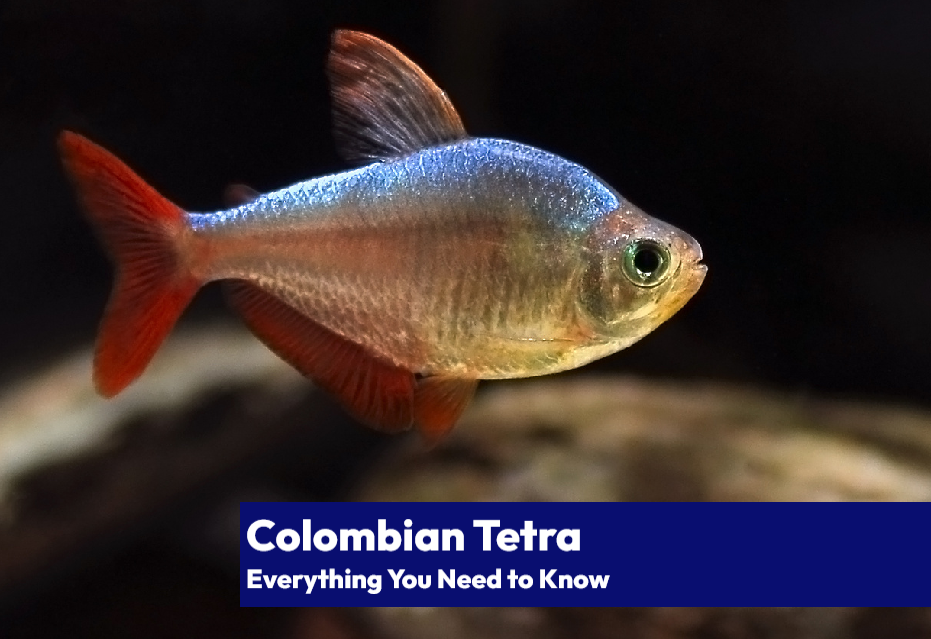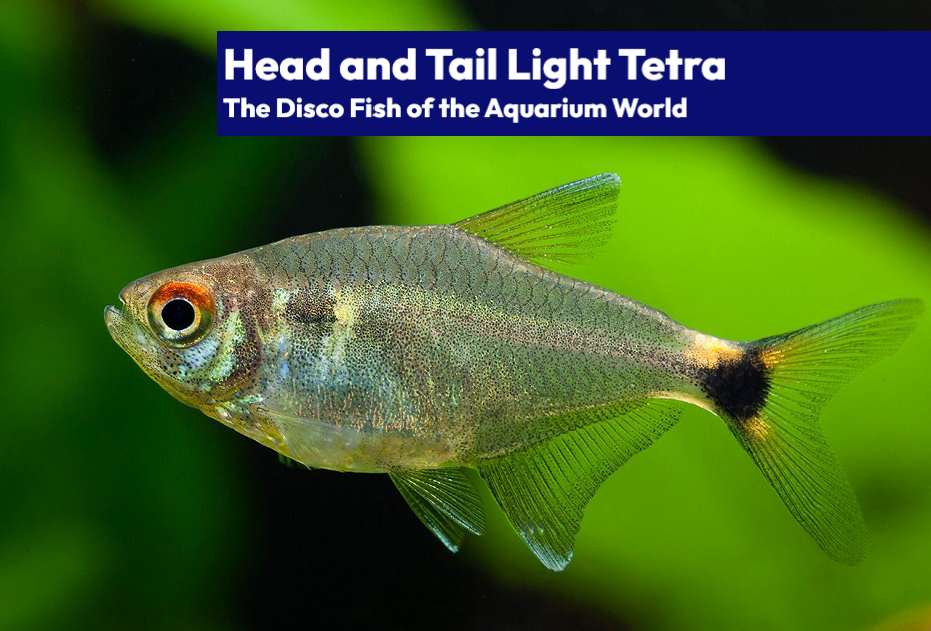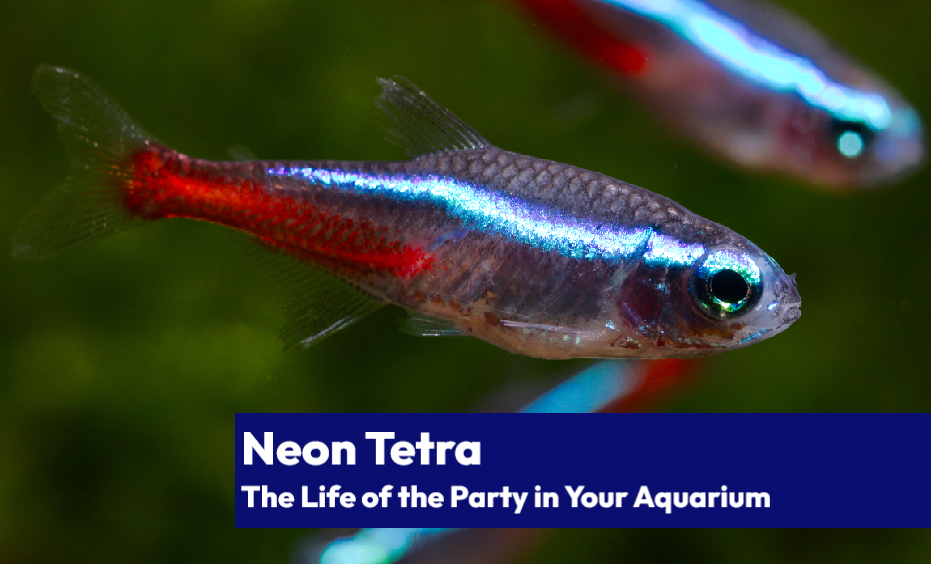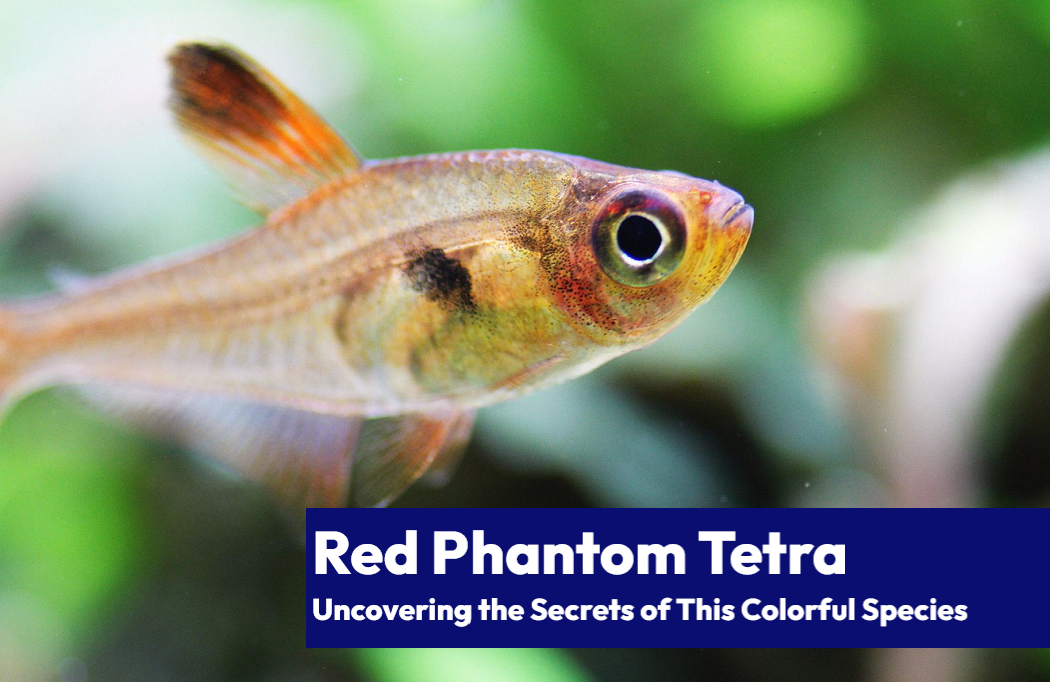The Black Skirt Tetra (Gymnocorymbus ternetzi), also known as the Black Widow Tetra, is a popular freshwater fish species that is widely kept in aquariums. One of the best things about the Black Skirt Tetra is its compact size, which makes it an excellent choice for smaller aquariums. With its sleek and slender body, striking black and grey coloration, and distinctive black vertical bars, this fish will mesmerize you with its elegance and grace.
Imagine watching a school of these stunning creatures swimming in harmony, gliding through the water with effortless grace. It’s a breathtaking sight that will be sure to leave you in awe. The Black Skirt Tetra is not just a beautiful addition to your aquarium, but it is also a hardy and easy to care for species that is perfect for both beginner and experienced aquarists.
| Care Data | Description |
|---|---|
| Scientific Name | Gymnocorymbus ternetzi |
| Adult Size | 7.5 cm (3.0 in) |
| Life Expectancy | 3-5 years |
| Tank Size | Minimum 10 gallons (37 liters) for a small school |
| Water Parameters | pH: 6.0 to 7.5, hardness: up to 15 dGH, temperature: 68 to 79°F (20 to 26°C) |
| Diet | Omnivore, accepts most foods |
| Housing Requirements | Subdued lighting, neutral-colored substrate, well-planted with open swimming space |
| Water Preference | Soft, acidic, tannin-stained |
| Behavior and Temperament | Schooling, peaceful, active |
| Breeding | Egg layer, scatter eggs among vegetation, remove parents after spawning |
| Tankmates | Avoid smaller species, avoid nipping slow-moving fish with long fins |
Appearance
The Black Skirt Tetra is easily recognizable by its distinctive black dorsal and anal fins, and its black stripes on the body. The body of the fish is roughly tetragonal in shape and is light grey in color, fading from near black at the tail to light grey at the nose. This fish stands out from its relatives because it has a big area of dark spots on the back half of its body.

In terms of color, the natural color of the wild Black Skirt Tetra is dark, but captive breeding has led to the creation of several colorful varieties, including the gold skirt tetra and the colored skirt tetra. These fish are not to be confused with dyes or artificially colored specimens, which are much more susceptible to disease and have a shortened lifespan.
Lifespan
The Black Skirt Tetra has a lifespan of 3 to 5 years in captivity. With proper care, you can expect your tetras to thrive and bring beauty to your aquarium for years to come.
Average Size and Growth Rate
The black skirt tetra grows to reach an average length of 7.5 cm (3.0 in), with hybrid varieties, such as the long-finned varieties, being slightly larger.
Black Skirt Tetras grow relatively quickly, reaching their full size within a year of hatching. They are fast-growing fish that are known for their lively and energetic personalities. However, their growth rate will depend on several factors, such as the size of their tank, water conditions, diet, and overall health.
Tank Size
A minimum tank size of 10 gallons (37 liters) is recommended for a school of Black Skirt Tetras. Larger tanks are always better and will allow for more room for your tetras to swim and thrive.
Water Parameters
Black Skirt Tetras prefer water temperatures of 22 to 26°C (72 to 79°F) with a pH between 6.0 and 7.5. Regular water changes and maintaining stable water parameters are essential for the health of your tetras.
Diet
The black skirt tetra is an omnivore and will eat most foods, including live, fresh, frozen, freeze-dried, or flake foods. For optimal health, it is recommended to provide a variety of foods, including high-quality flake foods, brine shrimp, and any type of worms, as well as vegetable supplements and spirulina.
| Food Options | Benefits |
|---|---|
| Frozen Bloodworms | Rich in protein and essential fatty acids |
| Daphnia | High in protein and fiber, helps with digestion |
| Brine Shrimp | An excellent source of protein, beneficial for growth |
| Mosquito Larvae | Rich in essential fatty acids and protein |
| Worms | Provides essential amino acids and vitamins |
| High-Quality Flake Food | A balanced diet with all essential nutrients |
| Vegetable Supplements | Adds variety and important vitamins |
| Spirulina | Boosts immune system and enhances color |
| Micropellets | Sinking pellets ideal for bottom feeders |
| Freeze-Dried Foods | Convenient and easy to store, packed with nutrients |
Housing Requirements
Black tetras prefer subdued lighting and neutral-colored gravel substrates. They are accustomed to large plants in their natural habitat, so a well-planted aquarium with some open swimming space is ideal.
Java Moss or spawning mops can be used as fine-leaved plants for spawning.
Behavior and Temperament
The Black Skirt Tetra is active and can be semi-aggressive, so it’s best to keep them in a school of at least 8 fish. They do well in a community tank with fish of their same size or larger, and with age, they become more sedentary.

Breeding
Breeding Black Skirt Tetras is relatively easy, but it does require a little bit of patience. The species reaches sexual maturity at about two years of age and spawns by intermittently releasing and fertilizing eggs among plants. It is important to remove the fish after spawning as they will eat their own eggs.
Here is a step-by-step guide to help you successfully breed Black Skirt Tetras in your aquarium.
Step 1: Prepare the Tank
Set up a breeding tank that is at least 20 gallons in size. Ensure that the water conditions in the breeding tank are optimal for the Black Skirt Tetras. The temperature should be between 78-80°F and the pH should be between 5.8-8.5. Also, add plenty of fine-leaved plants, such as Java Moss or spawning mops, to the tank to provide the fish with a place to lay their eggs.
Step 2: Condition the Fish
Condition the breeding fish with a high-quality diet that includes live, fresh, or frozen foods. This will help the fish to develop healthy and strong eggs. Avoid feeding the fish too much, as overfeeding can cause the fish to become too fat and unable to lay eggs.
Step 3: Set Up a Ratio
It is recommended to keep a ratio of more males to females in the breeding tank. This will increase the chances of successful breeding.
Step 4: Observe the Fish
Observe the behavior of the Black Skirt Tetras in the breeding tank. When the fish are ready to breed, they will start to display courtship behaviors, such as swimming in circles and flicking their fins.
Step 5: Remove the Parents
Once the fish start to lay their eggs, remove the parents from the breeding tank as they will consume the eggs.
Step 6: Raise the Fry
The eggs will hatch in about one day and the fry will be ready to feed on freshly hatched brine shrimp, egg yolk, or finely ground flake foods. Keep the water temperature at 78-80°F and provide the fry with plenty of hiding places.
Step 7: Monitor the Fry
Monitor the fry regularly and keep the water conditions optimal for their growth and health. Change the water regularly to prevent the buildup of harmful waste.
Step 8: Transfer the Fry to a Main Tank
When the fry have grown to a suitable size, transfer them to the main tank. Make sure to monitor the water conditions in the main tank and maintain optimal conditions for the Black Skirt Tetras to thrive.
Tankmates
Black Skirt Tetras do well in a community tank with peaceful fish species such as Neon Tetras,
| Tankmate | Description |
|---|---|
| Neon Tetra | Small, peaceful, and colorful |
| Guppies | Active and vibrant, adds color |
| Platies | Peaceful, adds variety to the tank |
| Swordtail | Active and peaceful, adds variety to the tank |
| Mollies | Active and peaceful, adds variety to the tank |
| Angelfish | Peaceful and elegant, adds variety to the tank |
| Corydoras Catfish | Bottom-dwelling, helps keep the tank clean |
| Harlequin Rasbora | Active and peaceful, adds variety to the tank |
| Endler’s Livebearer | Active and vibrant, adds color |
| Boesemani Rainbowfish | Active and vibrant, adds color |
| White Cloud Mountain Minnow | Active and peaceful, adds variety to the tank |
| Kuli Loach | Bottom-dwelling, helps keep the tank clean |
| Dwarf Gourami | Peaceful and adds variety to the tank |
| Rasbora Heteromorpha | Active and peaceful, adds variety to the tank |
| Zebra Danio | Active and peaceful, adds variety to the tank |
Variants and Morphs
What many people don’t know is that the Black Skirt Tetra comes in several different variations and morphs that offer a wide range of colors and patterns. These variants were created through captive breeding, leading to a new generation of man-made variations of this popular fish.
One of the most popular variants of the Black Skirt Tetra is the Longfin Black Skirt Tetra, which features longer fins and a more dramatic appearance than the traditional Black Skirt Tetra. Another popular variant is the Golden Skirt Tetra, which boasts a very light color that is sure to brighten up any aquarium.

Another variant of the Black Skirt Tetra is the Colored Skirt Tetra, which features a range of different colors and patterns, including red, blue, and green. These fish are sure to add a pop of color to any aquarium and are sure to be a conversation starter among guests.
Please note that some of the brighter, more vibrant variants of the Black Skirt Tetra have been artificially colored, and these fish are more susceptible to disease and have a shorter lifespan.
Diseases & Illness
| Illness | Description | Treatment |
|---|---|---|
| Ich (Ichthyophthirius multifiliis) | A parasite that causes white spots on the fish’s body | Raise the water temperature to 86°F (30°C) and treat with a medication specifically designed for Ich, such as Hikari Ich-X. |
| Fin Rot | Bacterial infection that causes the fins to become frayed and tattered | Maintain good water quality, increase aeration and treat with a bacterial fin rot medication, such as API Fin & Body Cure. |
| Swim Bladder Disease | A condition that affects the swim bladder, causing the fish to float or sink abnormally | Reduce feeding and fast the fish. Feed cooked, skinned peas after a fasting period. |
| Columnaris (Flexibacter columnaris) | Bacterial infection that causes sores and ulcers on the fish’s body | Maintain good water quality and treat with a columnaris medication, such as Maracyn or Furan-2. |
| Velvet (Oodinium ocellatum) | A parasite that causes a velvet-like appearance on the fish’s body | Raise the water temperature to 86°F (30°C) and treat with a velvet medication, such as Fritz CopperSafe |
History & Origin
This active and fast-moving species is native to the Paraguay River basin in South-Central Brazil, Paraguay, and Northeast Argentina.
It was first discovered in the slower tributaries and creeks of the Guapore and Paraguay Rivers where the forest canopy provides shade and food. These fish were initially only available as wild-caught, but with time and advancements in captive breeding, they are now entirely captive-bred.

This has led to the creation of several new variations of the Black Skirt Tetra, including the Longfin Blackskirt Tetra, the White Skirt Tetra, and the Colored Skirt Tetra. These new variations have added to the popularity of the species, making it a well-known and widely available fish for aquarium hobbyists.

In the past, similar species such as Socolof’s tetra (Gymnocorymbus socolofi) and the False Black Tetra (Gymnocorymbus thayeri) were mistaken for the Black Skirt Tetra. However, these species are not as commonly available in the aquarium trade, nor are they as popular as the Black Skirt Tetra.
Today, the Black Skirt Tetra is a popular fish in the aquarium trade and is enjoyed by hobbyists for its hardy and easy-to-care nature. With its unique appearance and interesting history, the Black Skirt Tetra is a must-have for any aquarium enthusiast.
Taxonomy
| Taxonomy | Description |
|---|---|
| Kingdom | Animalia |
| Subkingdom | Bilateria |
| Infrakingdom | Deuterostomia |
| Phylum | Chordata |
| Subphylum | Vertebrata |
| Infraphylum | Gnathostomata |
| Superclass | Actinopterygii |
| Class | Teleostei |
| Superorder | Ostariophysi |
| Order | Characiformes |
| Family | Characidae |
| Genus | Gymnocorymbus |
| Species | Gymnocorymbus ternetzi (Boulenger, 1895) |
Frequently Asked Questions
Q: How long do Black Skirt Tetras live?
A: Black Skirt Tetras have a lifespan of 3 to 5 years in captivity.
Q: How many Black Skirt Tetras can be kept in a 10 gallon tank?
A: A 10 gallon tank can comfortably hold 4-5 Black Skirt Tetras.
Q: How big do Black Skirt Tetras get?
A: Black Skirt Tetras grow up to 7.5 cm (3.0 in) in length.
Q: Are Black Skirt Tetras aggressive?
A: Black Skirt Tetras can be semi-aggressive, but like all fish, their behavior can be influenced by their environment and tank mates. Increasing their space and school size will decrease aggression.
Q: Can Black Skirt Tetras live with Angelfish?
A: Yes, Black Skirt Tetras and Angelfish can coexist in the same tank as long as the tank is large enough and the water parameters are appropriate for both species.
Q: Do Black Skirt Tetras lay eggs?
A: Yes, Black Skirt Tetras are egg-laying fish and will lay their eggs among plants in the aquarium.
Q: How many Black Skirt Tetras can be kept in a 20 gallon tank?
A: A 20 gallon tank can comfortably hold 8-10 Black Skirt Tetras.
Q: How many Black Skirt Tetras should be kept together?
A: Black Skirt Tetras are schooling fish and should be kept in groups of at least 6-8 individuals.
Q: What do Black Skirt Tetra eggs look like?
A: Black Skirt Tetra eggs are small and transparent, and will be laid among plants in the aquarium.
Q: What do Black Skirt Tetras eat?
A: Black Skirt Tetras feed on small crustaceans, insects, and worms in the wild, and can be fed a variety of foods in the aquarium, including live or frozen foods and commercial dry foods.
Q: Are Black Skirt Tetras fin nippers?
A: Black Skirt Tetras are not known to be fin nippers, but like all fish, their behavior can be influenced by their environment and tank mates.
Q: Can Black Skirt Tetras live with Guppies?
A: Yes, Black Skirt Tetras and Guppies can coexist in the same tank as long as the tank is large enough and the water parameters are appropriate for both species.
Q: Why are my Black Skirt Tetras chasing each other?
A: Black Skirt Tetras may chase each other for a variety of reasons, including territorial behavior, competition for food or mates, or simply playing.

Tim Priest, a renowned aquarium expert with over 15 years of experience in aquatic gardening and fish education, is dedicated to helping enthusiasts create stunning and thriving aquatic environments. As the founder of LearnTheAquarium.com, Tim shares his wealth of knowledge, passion, and expertise through engaging articles, educational resources, and personalized advice.
Discover the secrets to creating captivating underwater landscapes and maintaining healthy aquatic ecosystems. Join Tim on an exciting journey and let your aquarium adventure begin!

